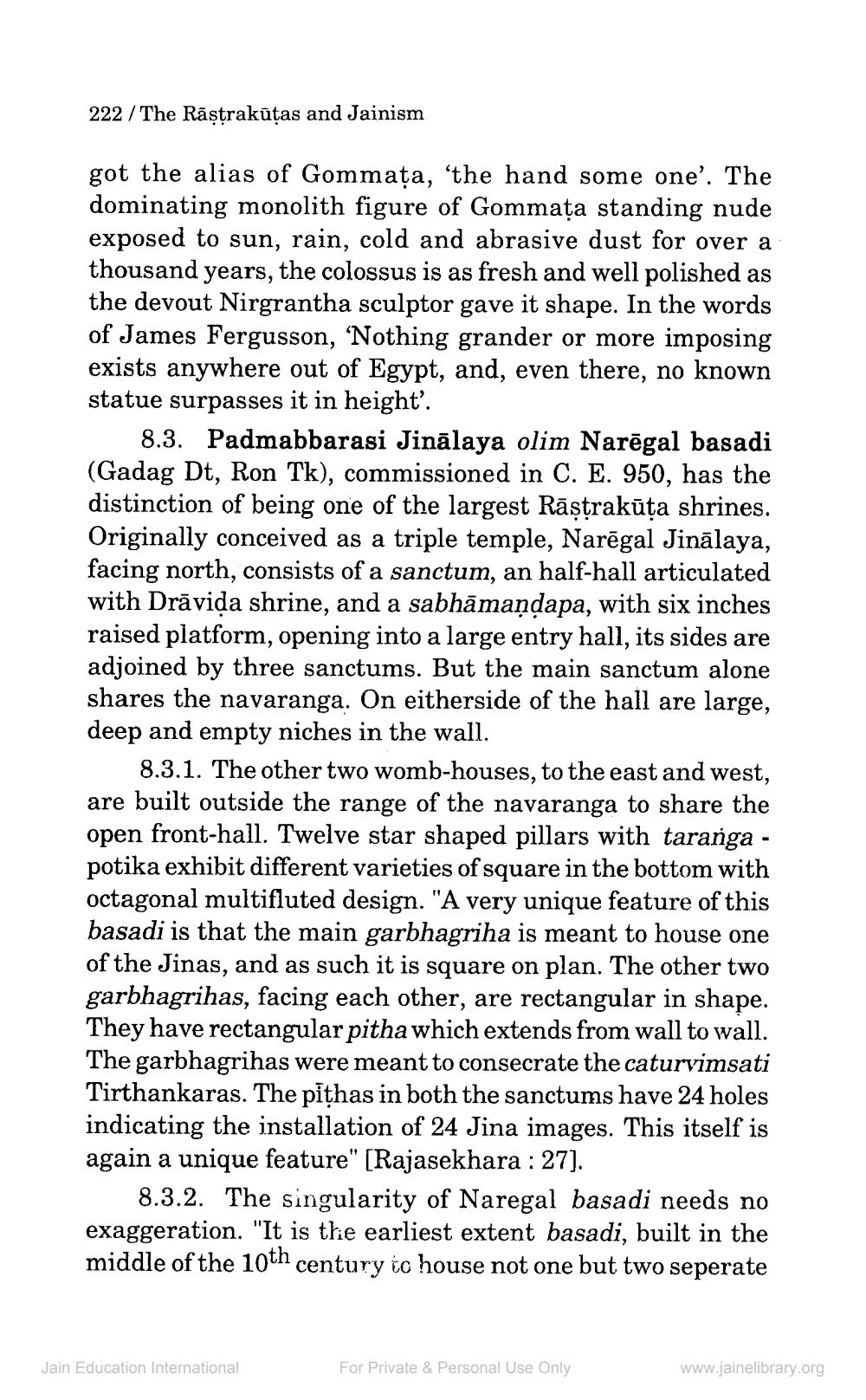________________
222/The Raṣṭrakūtas and Jainism
got the alias of Gommața, 'the hand some one'. The dominating monolith figure of Gommata standing nude exposed to sun, rain, cold and abrasive dust for over a thousand years, the colossus is as fresh and well polished as the devout Nirgrantha sculptor gave it shape. In the words of James Fergusson, 'Nothing grander or more imposing exists anywhere out of Egypt, and, even there, no known statue surpasses it in height'.
8.3. Padmabbarasi Jinālaya olim Narēgal basadi (Gadag Dt, Ron Tk), commissioned in C. E. 950, has the distinction of being one of the largest Raṣṭrakūta shrines. Originally conceived as a triple temple, Narēgal Jinālaya, facing north, consists of a sanctum, an half-hall articulated with Dravida shrine, and a sabhāmaṇḍapa, with six inches raised platform, opening into a large entry hall, its sides are adjoined by three sanctums. But the main sanctum alone shares the navaranga. On eitherside of the hall are large, deep and empty niches in the wall.
8.3.1. The other two womb-houses, to the east and west, are built outside the range of the navaranga to share the open front-hall. Twelve star shaped pillars with taranga potika exhibit different varieties of square in the bottom with octagonal multifluted design. "A very unique feature of this basadi is that the main garbhagriha is meant to house one of the Jinas, and as such it is square on plan. The other two garbhagrihas, facing each other, are rectangular in shape. They have rectangular pitha which extends from wall to wall. The garbhagrihas were meant to consecrate the caturvimsati Tirthankaras. The pithas in both the sanctums have 24 holes indicating the installation of 24 Jina images. This itself is again a unique feature" [Rajasekhara : 27].
8.3.2. The singularity of Naregal basadi needs no exaggeration. "It is the earliest extent basadi, built in the middle of the 10th century to house not one but two seperate
Jain Education International
For Private & Personal Use Only
www.jainelibrary.org




